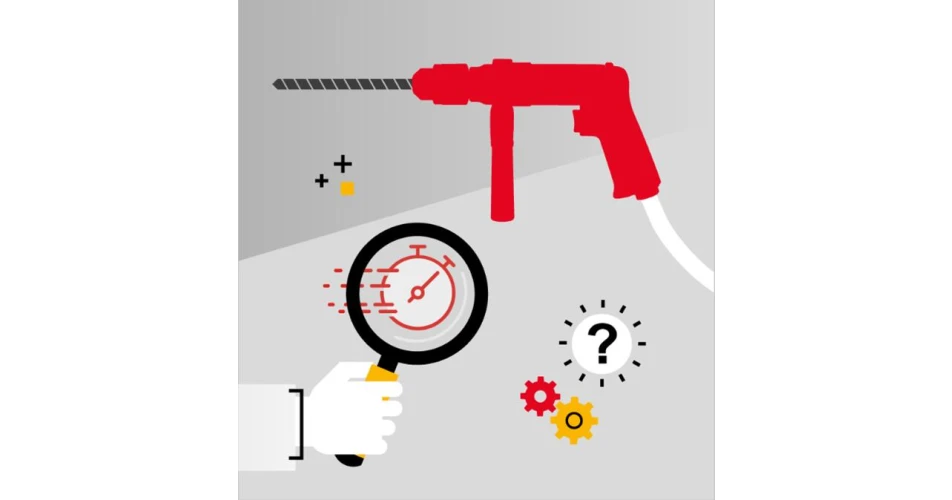Tool specialist Chicago Pneumatic has issued advice on safe and productive drilling as part of it Expert Corner workshop advice series.
The company’s technical team says with the right tool, drill bit and speed, virtually any material can be drilled, with the drill’s speed having the most impact on the quality and efficiency. Soft materials are generally considered easy to drill, and little thought is given to the tool, especially if the drilled hole doesn’t need to be particularly high quality. However, if a hole needs to be drilled with precision, then the correct speed is vital. Hard materials, including hardened steel, alloy steel or cast iron, are tougher to drill and lower speed and lubrication is recommended here.
When drilling, higher speed is not always best. To drill effectively technicians need to select the right speed for the material. If the speed is too low, there is a risk of tearing and ripping the hole. However, if the speed is too high it is hard to get bite in the material. This is especially true for hardened steel.
Drills bits must be sharp and in good condition. This will also reduce the necessary pressure that needs to be applied. Harald Odenman, Product Marketing Manager at Chicago Pneumatic says, “When you use a low speed drill, <1000 rpm, the tool can twist your arm if the drill bit gets stuck. This causes many injuries. To protect yourself always use a side handle. ”
Chicago Pneumatic says there are 4 key steps to define the right speed the drill: Step 1: Identify the material to be drilled, Step 2: Define the drill bit size, Step 3: Identify the recommended speed of the tool using a drilling speed chart and Step 4: Select the preferred tool based on factors other than the speed, for example: handle type, duty, reversible or non-reversible, chuck capacity / type / brand.
Other general tips are:
When drilling a large hole, start by drilling a smaller pilot hole that is half the targeted diameter. It’s not uncommon to use three or four different-sized drill bits to achieve a good finish.
Take a few seconds to make a good mark with a hammer and centre punch. This makes drilling much easier and increases the quality of the hole.
Let the drill bit cool down between each use and lubricate it during operation. That way it will last longer and drill faster.
Always use a sharp drill bit in good condition.
Use the drill’s side handle when necessary to prevent the risk of injury.
Clamp the work-piece firmly, especially if it is small.
Always use safety glasses.
To assist with speed selection Chicago Pneumatic has produced a drill speed chart which can be downloaded in the Expert Corner section at www.cp.com
